Inside India’s Record-Breaking Aviary
Shuka Vana is home to 468 bird species, more than any similar collection in the world.

A giant red and yellow macaw sits on a pedestal above a figure of the monkey-god Hanuman, the bird’s concrete wings spread out as if ready to take flight. Behind it is a small gushing waterfall, surrounded by lush green foliage. Melodious tweets, boisterous squawks, and dulcet calls fill the air. I’m at the entrance of Shuka Vana, also known as Parrot Park or the Forest of Parrots, an aviary situated on the outskirts of Mysore in South India.
Over 2,000 birds live at Shuka Vana, and as the name suggests, the majority of them are parrots. The aviary was founded in 2012 by Dr. Sri Ganapathy Sachchidananda Swamiji, the spiritual and cultural head of an ashram, Avadootha Datta Peetham. In May 2017, the 1-acre wide and 50-meter (164-foot) high structure, which is located on ashram premises, garnered the Guinness World Record for having the most bird species (468) in an aviary.

It’s a Sunday morning when I arrive and scores of people are already milling around. A busload of school girls has arrived and their excited voices add to the cacophony of the birds. Three middle aged women draped in sarees push past me as I enter.
Inside, the aviary is stocked with tall slender trees and swaying palms, alongside short shrubs such as ferns and crotons. A pair of cockatoos frolics in the canopies and a lone blue crowned pigeon scans the ground. Many more birds, obscured by the foliage and the shining sun, only their shapes visible, fly around the canopies.
Rows of enclosures, housing cockatoos, macaws, amazon parrots, parakeets, and conures, adorn the sides of the aviary. While some birds are allowed to fly freely during the roughly six hours of public access per day, others are kept in the enclosures for the sake of their safety and establishing proper feeding habits. Guests walk around on tiled paths, admiring Shuka Vana’s colorful inhabitants.
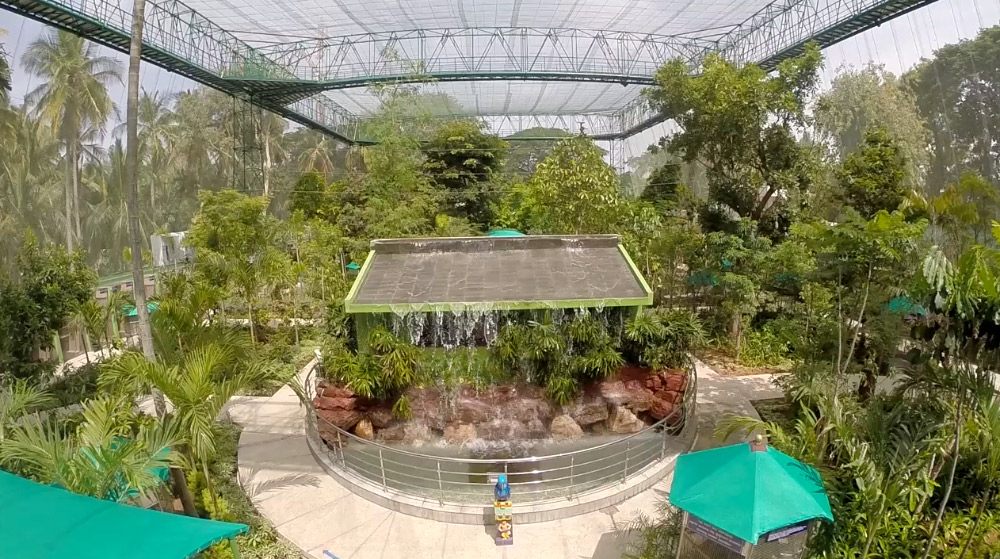
The idea and vision for Shuka Vana took root in 2011 when Sachchidananda Swamiji, who was unavailable to be interviewed for this article, visited South America to promote the mass chanting of the Ramayana, a Hindu holy text. According to Shiva Kumar, manager at the aviary, Sachchidananda Swamiji’s boat overturned in Venezuela. “As he was being rescued from the water,” Kumar says in the local language of Kannada, “he saw a horde of white Amazon birds circle around him and fly away.
Kumar adds that when Sachchidananda Swamiji came back to India, a devotee gifted him 25 birds of the parrot family, many of which were unhealthy. Taking this as some sort of divine message, he nurtured the animals back to health and endeavored to care for more.
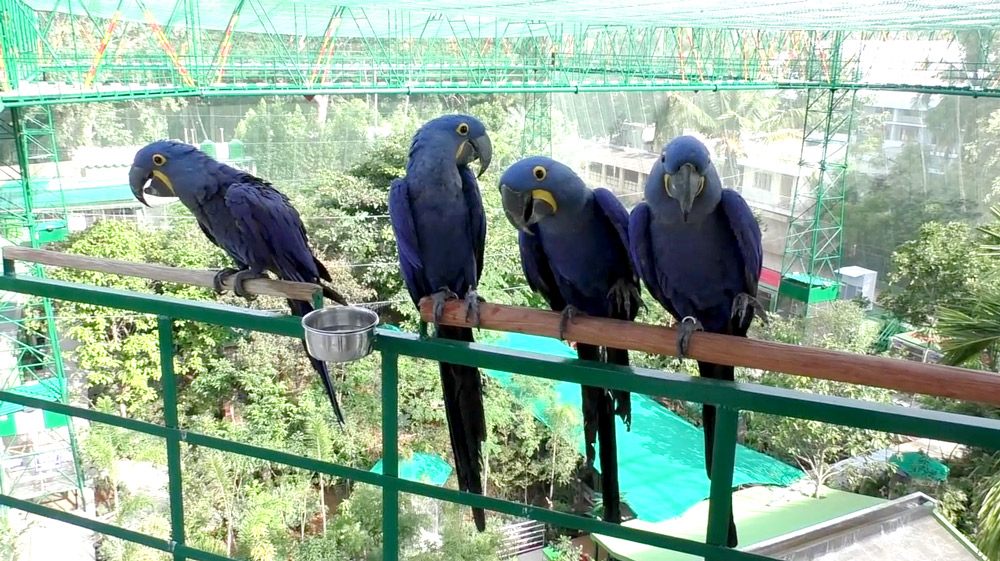
Word of his mission spread and people from different parts of India brought birds that were abandoned, injured, or sick to his ashram. As the number of his patients grew, Sachchidananda Swamiji established the aviary, with an attached hospital where unhealthy birds can be rehabilitated.
The aviary conserves endangered and vulnerable birds that have entered the country through the pet industry. All the creatures brought to Shuka Vana were born and bred in captivity and it’s considered unsafe to release them into the wild.
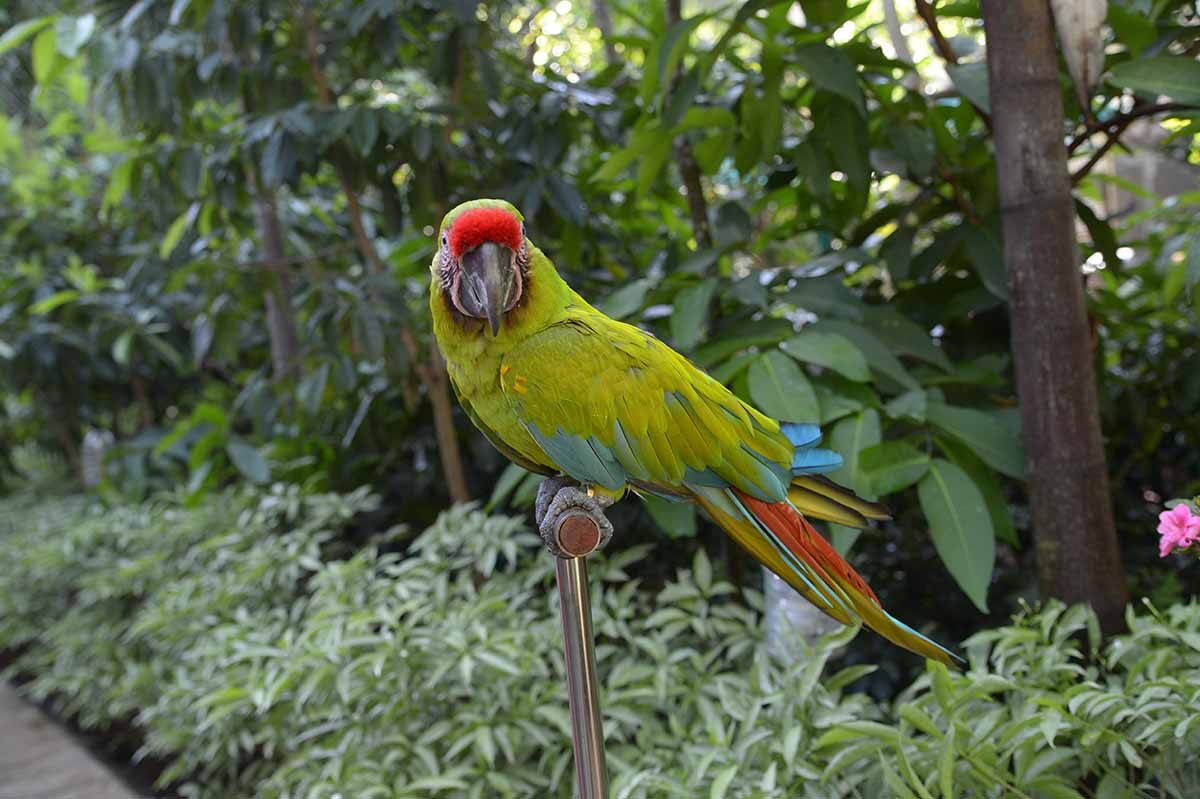
A narrow path on one side of the aviary leads to the bird rehabilitation center, a few meters away. The square building opens into a wide room, its walls lined with cages arranged in rows.
The very first cage is home to an African grey parrot with a congenital disorder. One of its legs is shorter than the other. It cannot balance take-offs or landings well, and has to be kept confined. In separate nearby cages, there’s a sun conure with only one leg and a cockatoo with a fractured wing.
In the center of the room, another cockatoo, this one with an e-collar on its neck, is prancing around a table. Dr. Dasari Srilakshmi, a bird behavior specialist, talks to it in soothing tones and engages it in games. Dr. Srilakshmi, along with a veterinarian and a nurse, tends to the avian patients at Shuka Vana. In addition, there are 25 to 30 volunteers who help take care of the birds and are trained to keep a keen eye for behavioral changes, weight loss, and other issues.
The cockatoo was sent here recently by someone who found it in a miserable state in a pet shop. Suffering from depression, the bird had taken to self-harm, plucking its own feathers and even its flesh. After many months of rehabilitation and behavior therapy, the cockatoo is now on its way to recovery and will soon join a flock at the aviary.

“These birds have ailments similar to humans. Some have congenital disorders, some suffer from depression,” says Dr. Srilakshmi. She adds, “their lifespan is also long, 60 to 70 years. Often people do not realize the care they need while purchasing them as pets.”
The hospital is well-equipped to detect, diagnose, and treat illnesses—there’s an ultrasound machine, digital X-ray, an avian blood lab, an operation theater, and a microscopy lab. There is also a DNA lab, where a small research project is underway to determine what makes some birds more adept at speech than others.
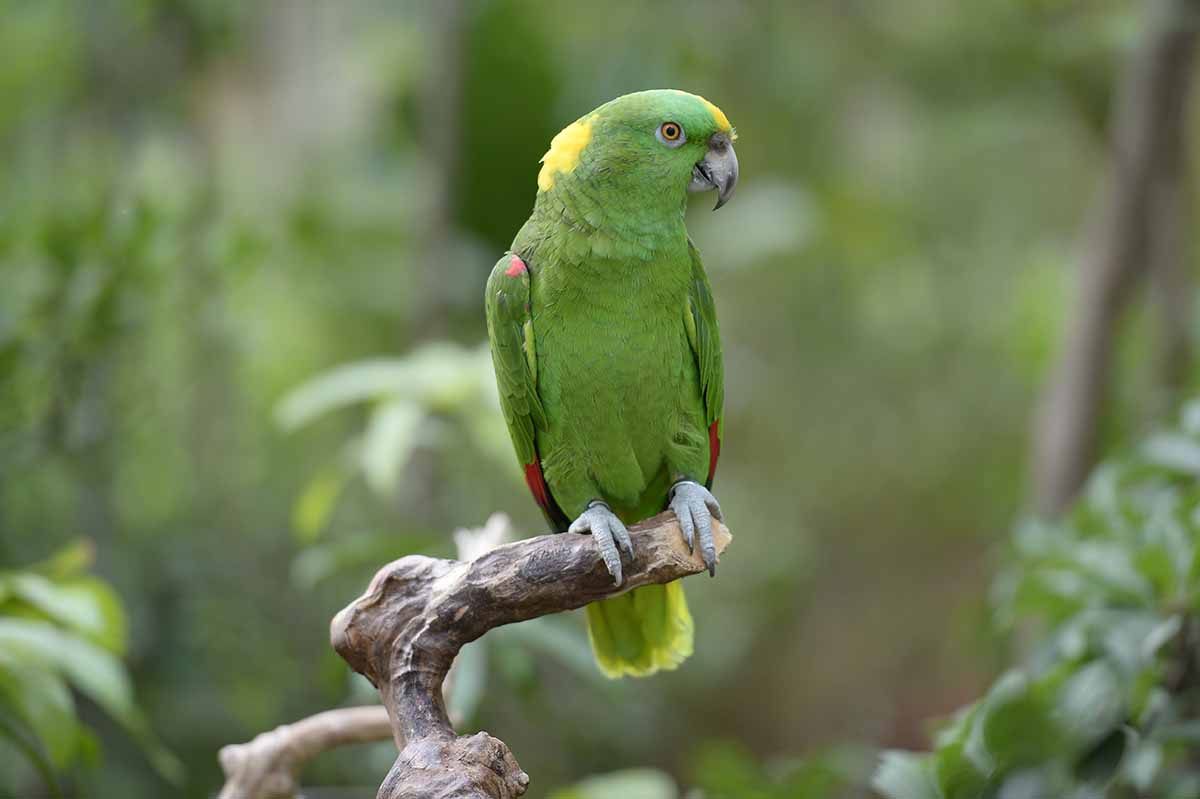
The top floor of the hospital holds a quarantine center where new arrivals are held for three weeks while they are tested and monitored for diseases and infections. Once cleared, they are released into the aviary.
The process of grouping the old and new birds is meticulously planned. Dr. Srilakshmi ensures that birds of the same species but with different personalities—dominant, introverted, friendly—are grouped together to keep the harmony. The idea is also for them to have enough interaction with each other to choose their mates. “Birds of the parrot family bond for life monogamously. The bonding could be male-male, female-male, or female-female,” Dr. Srilakshmi explains.
Dr. Srilakshmi and I walk back into the aviary. It’s almost noon and the institution will soon close to the public so the birds can feed freely. A great military macaw, a green-and yellow macaw, and a scarlet macaw are perched on a feeding station, nonchalantly watching their human guests. Nearby, a yellow-naped amazon parrot flutters its wings and drinks water from a cup held out by one of the volunteers. Here at Shuka Vana, these formerly neglected birds have finally found a safe haven.

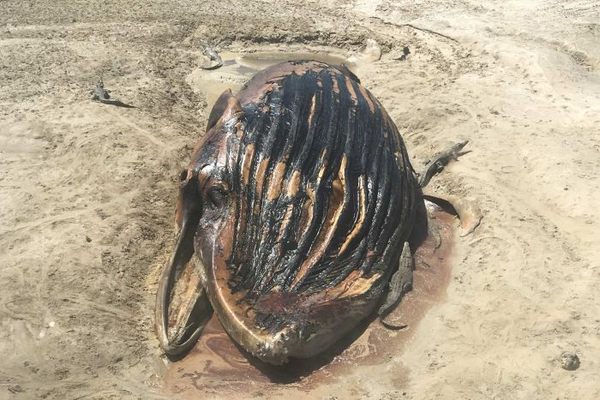


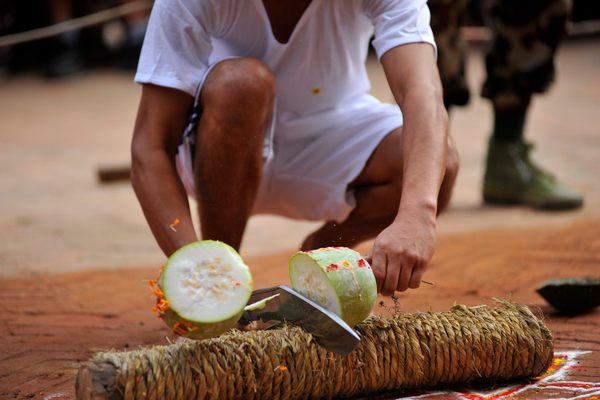
















Follow us on Twitter to get the latest on the world's hidden wonders.
Like us on Facebook to get the latest on the world's hidden wonders.
Follow us on Twitter Like us on Facebook